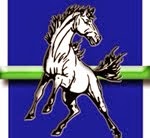Not only does the new year bring resolutions, so does it bring the Decorah Eagles!
Through the genius of the Raptor Resource Project a 24 hour webcam has been placed so that the world may watch the growth and lives of a family of bald eagles. Decorah Eagle Cam Alerts have embraced this amazing opportunity and have put together content from across the world wide web in one place for your convenience. In addition, they have set up a system of alerts to let you know when the real action takes place. Check it out! The Raptor Resource Project also has a YouTube Channel!
Live Video streaming by Ustream
Information from the Decorah Eagles Upstream Site about the pair.
FAQs
How high is the nest?
About 80 feet.
How big is the nest?
5-6 feet across, about the same deep; it weighs about 1½ tons.
How old is the nest?
The eagles built it in 2007. A previous nest close by fell when a windstorm broke one of the branches.
Are these eagles banded?
No.
Which is the male and which is the female?
It is hard to tell the difference unless they are both on the nest. The female is larger than the male. This female has a ridge above her eyes that goes further back than on the male, and her eyes are surrounded by a greyish shadow; the male has a line around his eyes that makes them look “beadier.” Some think that the male’s head is “sleeker” than the female’s.
What is the history of this pair?
They have been together since the winter of 2007-2008. Her markings at that time indicated that she was about 4 years old. They successfully hatched and fledged 2 eaglets in 2008, then 3 in 2009, and 3 more in 2010.
When were the eggs laid in 2010, and when did they hatch?
First egg was February 25, second on February 28, third on March 5. First hatch was April 3, second on April 6, third on April 9. All three eaglets fledged and are now on the wing but are not being tracked.
What is the area around the nest like?
The nest is in a cottonwood tree on private property near the Decorah Fish Hatchery (operated by the Iowa Department of Natural Resources), on the banks of the babbling waters of Trout Run in extreme northeast Iowa. The nest can be seen from the hatchery, but visitors to the hatchery should keep their distance from the nest tree, both to respect the private property where the tree is located and to avoid disturbing the eagles.
Here is a ground-level video of the surroundings, taken in March 2010.
This video shows the eagles’ point of view.
Where can I see pictures and videos of these eagles?
RRP provides an archive of daily views of the nest over the immediate 24-hour period, taken every 2 minutes. Click on Eagle Dailies.
RRP’s Youtube site has many videos.
Who operates and maintains this cam?
The Raptor Resource Project (RRP) maintains the cams, of which there are two, and the feed is streamed online 24/7. Both are positioned on one of the nest’s supporting limbs about 4-5 feet above the nest. The main cam is automated and is trained on the nest. The other cam has pan-tilt-zoom capabilities (PTZ). At dark the main cam switches to infrared (invisible to the eagles) night-time view. Here is a slide show of the cam installation in fall 2010.
Who does the panning, tilting, and zooming, and when does that happen?
Bob Anderson, Executive Director of RRP, switches to the PTZ cam when time and weather permit, and especially when there appears to be interesting activity in the nest. He will be especially attentive when hatching begins.
What is the Raptor Resource Project?
Established in 1988, the non-profit Raptor Resource Project specializes in the preservation of falcons, eagles, ospreys, hawks, and owls. We establish and strengthen breeding populations of these raptors by creating, improving, and maintaining nests and nest sites. In addition to directly managing over twenty-three falcon, eagle, and owl nest sites, we provide training in nest site creation and management across the United States, reach more than 85,000 people each year through lectures, education programs, and our website, and develop innovations in nest site management and viewing that bring people closer to the world around them.
Our mission is to preserve and strengthen raptor populations, to expand participation in raptor preservation, and to help foster the next generation of preservationists. Our work deepens the connection between people and the natural world, bringing benefits to both.
Check out the links to cams of many of the raptor nests that RRP manages.
RRP also has a Facebook page.
How can I read or participate in a forum about this and other RRP cams?
Go to the RRP Forum.
Social Stream










